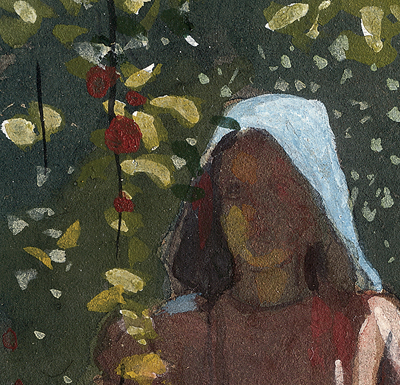Detail: Opaque watercolor effects
As is the case with many of Homer’s early watercolors, Apple Picking was painted in opaque watercolor. To achieve both brightness and opacity he used zinc white watercolor throughout, mixing it with and layering it under transparent watercolor. For example, he scumbled blue, pale green, and pink watercolor, each mixed with white, across darker preliminary washes to give the effect of light reflecting off the grass. blue mixed with white suggests the sky seen through the trees, while transparent green, red, and yellow are layered over pure white to accentuate the dazzling highlights in the girls’ clothing and basket, and in the sun-dappled grass and leaves. Homer also used inherently opaque pigments without adding white to create similar effects. For example, he painted reflected light on the girls’ faces with chrome orange and chrome yellow.
Detail of Apple Picking, which reveals how Homer constructed the apple branch with discrete, unblended brushstrokes and employed opaque pigments such as chrome orange and chrome yellow on the girl’s face to produce the effect of reflected light.

